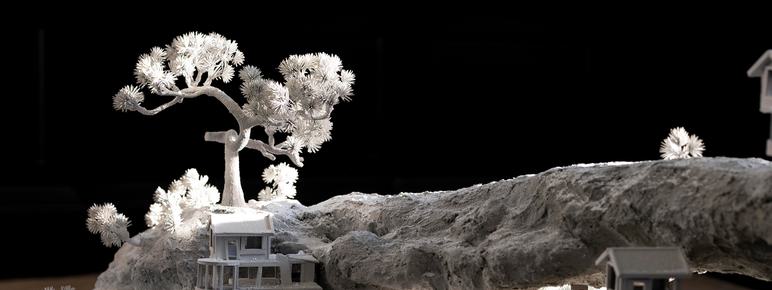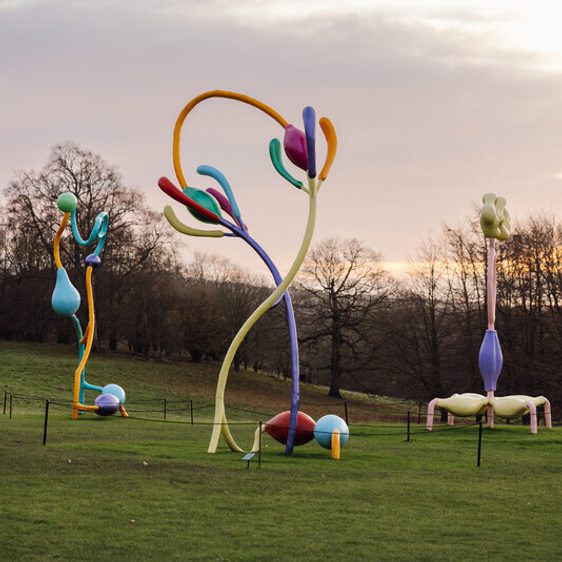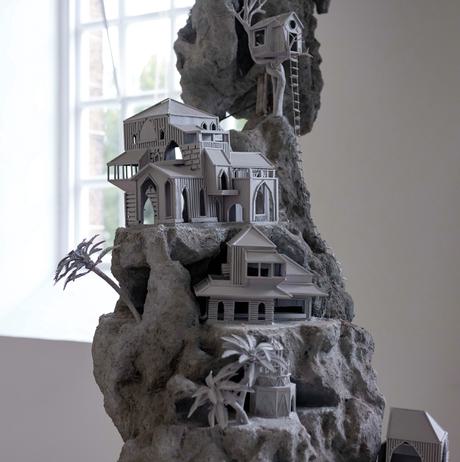
About Saad Qureshi: Something About Paradise
British artist Saad Qureshi explores what paradise means in a contemporary context in his first solo museum exhibition, Something About Paradise.
In the nave of YSP’s 18th-century Chapel, three monumental organic forms rise from the ground, spread with landscapes, buildings and mysterious structures. A closer viewing reveals an eclectic mix of architectural styles, from traditional temples and churches to modernist houses and palaces, nestled among panoramas of forests, deserts and fantastical geological formations.
Qureshi is an avid gatherer of stories. In developing Something About Paradise he travelled around the country asking those with and without faith what paradise means for them. Speaking directly to people allowed the artist space to interpret the descriptions of indistinct and imagined places, as seen in memories and dreams, into physical installations that he refers to as ‘mindscapes’.
Standing against the Chapel walls are seven ornate, hand-cut and painted wooden gates referencing both the gates of paradise or the seven heavens that are common to many religions. By combining the earthly and spiritual in the meditative setting of the Chapel, Qureshi invites audiences to reflect on common ground in today’s frequently polarised society and opens up possibilities for a profound and hopeful dialogue between people.
‘Paradise is a very personal place. Over the course of my life, it’s a word that has kept recurring in a variety of guises. I was born into a religious household, where the Quranic allegories of the seven heavens formed part of the backdrop to family life. As I grew up and my experiences broadened, I realised that the paradise that others spoke of was often radically different from mine, yet never too far from our consciousness.’ - Saad Qureshi
You may also like
- Profile

Saad Qureshi
- Profile

Emily Ryalls
YSP x The Art House Residency - News

Working Class Creatives Database x YSP Residency 2023 artists announced
16 October 2023 - Art Outdoors

Vanessa da Silva: Muamba Posy
Muamba Posy was first exhibited on the moors of Penistone Hill in Haworth, West Yorkshire. Its large, organic forms and vivid colours are inspired by the Hill’s ever changing cycles of nature, where life has continuously adapted over time.

